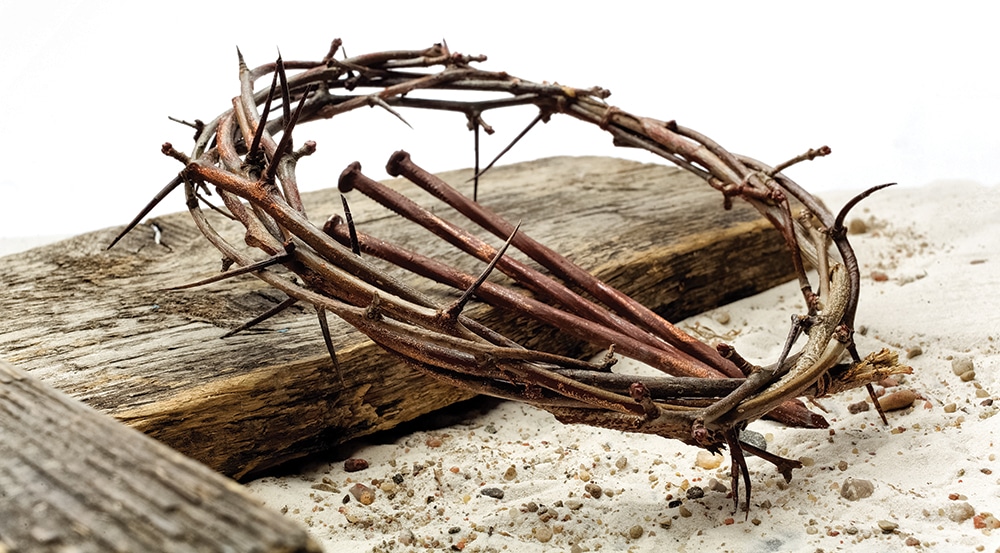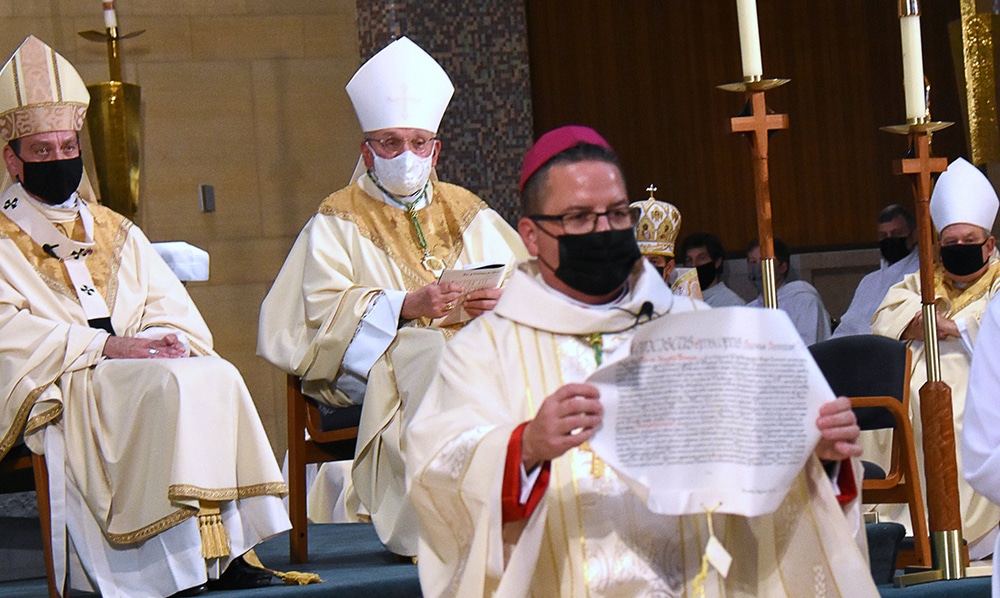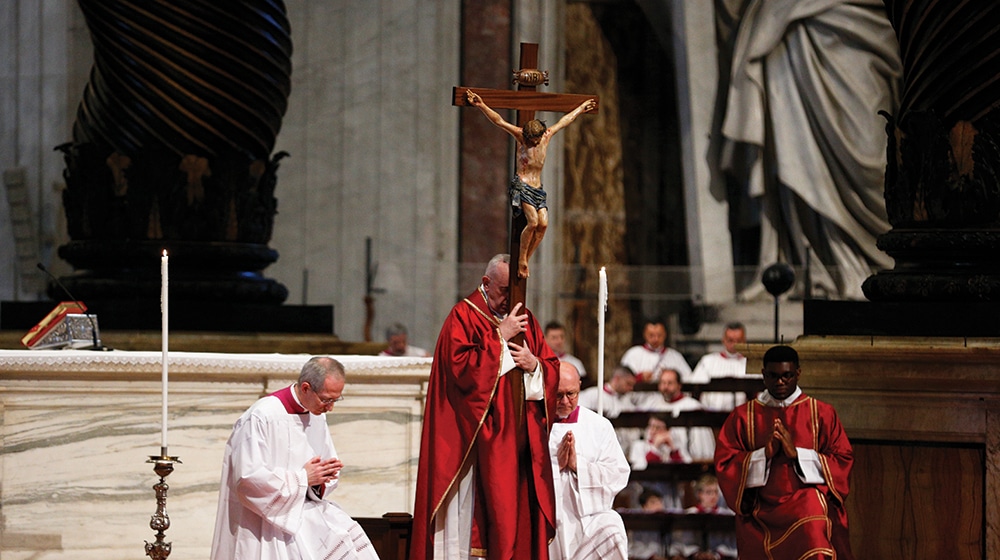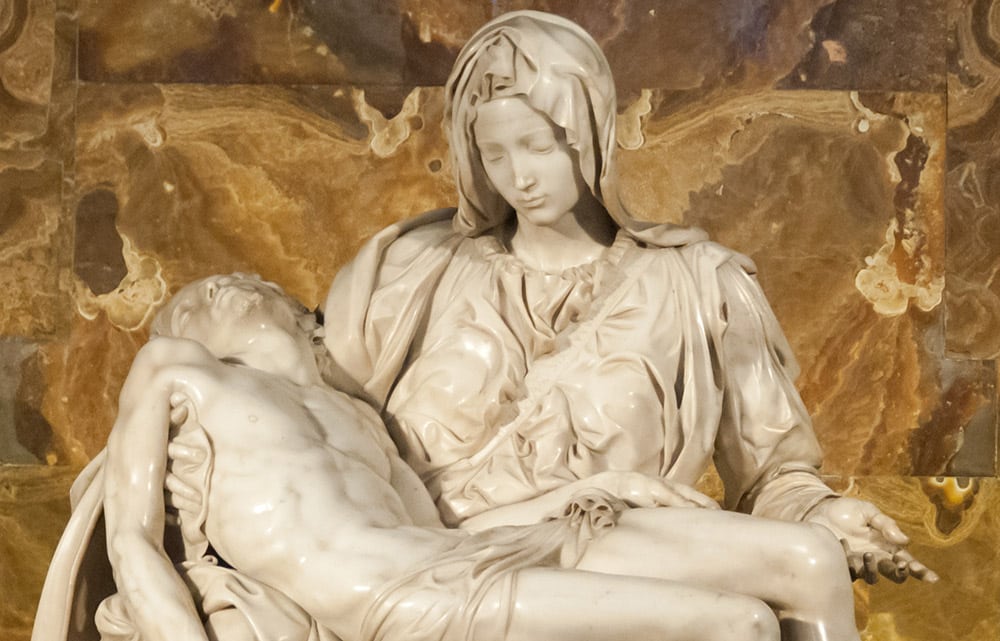Just as Joseph, the patriarch of Old Testament times, provided food for Egypt and “the whole world” when a great famine raged from one country to another, St. Joseph, the patriarch of New Testament times, will supply us with heavenly food during these days of spiritual famine throughout the world. “Go to Joseph,” Pharaoh told the Egyptians, “and do whatever he tells you” (Gn 41:55).
“Go to Joseph,” Pope Francis says to us as we celebrate the Year of St. Joseph (Dec. 8 2020-Dec. 8 2021), for the whole world is spiritually hungry and suffering from a pandemic. “Should we not go directly to God?” some will ask. Yet, the starving Egyptians did not go directly to Pharaoh, but to the one appointed by him to provide for the needs of his people. The grain which the Patriarch Joseph had stored up in the warehouses of Egypt is symbolic of the endless graces that are stored up in the heavenly treasury. The graces and gifts belong to God alone, but they are distributed to all who ask for them by the authority given to St. Joseph, the guardian of the Word Incarnate and spouse of the mother of God.
St. Joseph is often called “the silent saint” because no words from his mouth are recorded in Sacred Scripture. But that doesn’t mean that we can know nothing about him. Hundreds, perhaps thousands, of volumes have been written by saints, scholars and mystics concerning St. Joseph, based mainly on the observations of what he did as recorded in the holy Gospels.
As we celebrate the first of his two feast days on March 19 — the second is the feast of St. Joseph the Worker, which the Church celebrates May 1 — let us consider learning about the life of St. Joseph by seeing him through the eyes of his virginal spouse, Mary, as we follow this holiest of all married couples through the Joyful Mysteries of the holy Rosary. The purpose of this approach is to provide pious and uplifting reflections on those mysteries whenever we pray the Rosary. We will keep in mind that a mystery is like a mountain of ice cream — there is so much there, and we can’t eat it all. Little by little, however, we can have a delicious taste of those events in the life of the Holy Family which will benefit our own spiritual life. This is in keeping with the spirituality of St. Ignatius of Loyola who taught that we should use our imagination to supply scenes from the life of Christ to enhance our prayer and meditation.
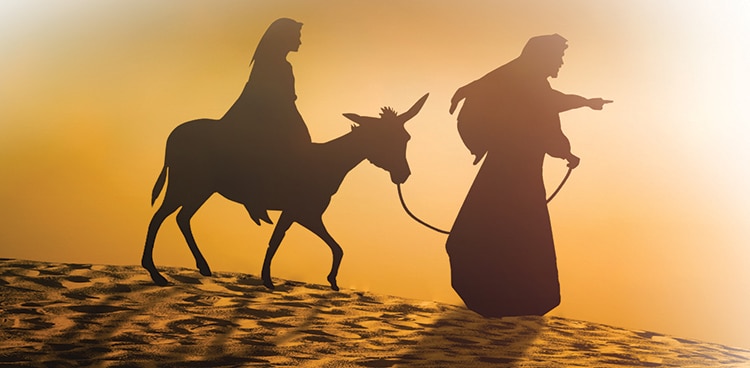
Context to St. Joseph
Before we begin with the Annunciation, let us look at the life of St. Joseph prior to his espousal to Mary. The Gospels tell us that he was the son of Jacob (Mt 1:16) and/or Heli (Lk 3:23). One could have been his natural father, the other his legal father. Saints and Scripture scholars have come to no definite agreement on this issue. All that matters is that Joseph was a descendant of King David, of the tribe of Judah.
By occupation, Joseph was a carpenter — or more accurately, a craftsman (tekton, in Greek), who worked with many kinds of building materials. He might have used wood to make farm implements or stone to build houses.
It was traditional among the Jews in Joseph’s day for a young man between the ages of 18 and 20 to find a wife (sometimes arranged by a match-maker) and start a family. The girl was usually between the ages of 13 and 15. And so it was with Joseph and Mary when they were espoused either in Jerusalem or Nazareth. The apocryphal writings favor Jerusalem, while the Gospel of Luke (cf. 1:26-27) prefers Nazareth, because that is where the Annunciation took place. At any rate, Joseph would have gone to the home of Mary’s parents, and having reached an agreement about a dowry, they would exchange vows and become officially espoused. This was the first step in a two-part process of the marriage ceremony in Joseph’s day. Did Joseph give Mary a ring? The people of Perugia, Italy, seem to think so, for this precious relic is reserved there in the Cathedral of San Lorenzo. Did Mary give a gift to Joseph? One opinion says that it was a prayer shawl woven by her own hand. After the espousal ceremony, Joseph went to his home and Mary continued to live with her parents in Nazareth. Then, the Joyful Mysteries began.
The Annunciation
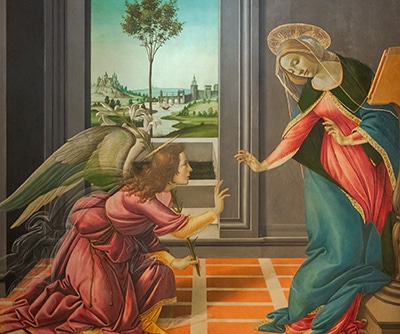
“In the sixth month, the angel Gabriel was sent from God to a town of Galilee called Nazareth, to a virgin betrothed to a man named Joseph, of the house of David, and the virgin’s name was Mary” (Lk 1:26-28).
Luke makes it very clear that Mary was a virgin. How then could she enter into a marriage with Joseph — unless he also took a vow of virginity? Since he was described as being a just man, justice would demand he and Mary must have shared this information with one another, as unusual and mysterious as it was. Most Josephologists today accept the fact that both Joseph and Mary were virgins before and after the birth of Jesus. Many in the Eastern Churches (Catholic and Orthodox) believe that Joseph was an elderly widower with children from his previous marriage. The good intention behind this belief is to protect the virginity of Mary.
Where was Joseph during the angelic annunciation? Most likely he was preparing a home for the time when he and Mary would come together for the second part of the marriage ceremony — up to a year after the espousal. At that point, the groom would go to the house of the bride and escort her, amid lots of singing and dancing, to their new home. There would be a wedding reception, which could last up to a week, such as the one at Cana in Galilee. For Joseph and Mary, that ceremony was probably not meant to be.
| Priests of St. Joseph |
|---|
| The Josephites (Society of St. Joseph of the Sacred Heart) have ministered in the African American community since 1871. It is their exclusive apostolate and charism. Since St. Joseph was known in his day and in ours as a “just man” (Mt. 1:19), the Josephite priests and brothers promote justice and equality for African Americans in the United States and within the Catholic Church, believing, as all Catholics should, that there is no room for second-class citizenship in either society because of the color of one’s skin.
The Josephites are an interracial Society of Apostolic Life, working in Northern urban parishes and Southern rural and urban parishes, as well as schools and campus ministries. Just as St. Joseph is regarded as the first missionary because he took the Incarnate Word into Egypt, the Josephites focus on evangelization as “home missionaries.” Ironically, many young men have come from Africa to join their ranks. They bring with them a culture that is pro-life, pro-marriage and pro-family which richly complements the Josephite vocation to serve in the African American community. For more information, visit josephites.org. |
The Visitation
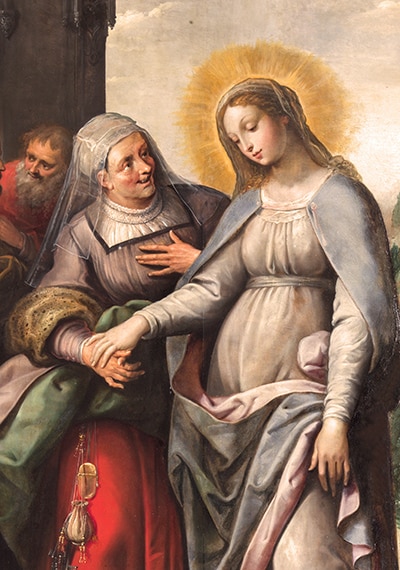
“And behold, Elizabeth, your relative, has also conceived a son in her old age, and this is the sixth month for her who was called barren; for nothing will be impossible for God” (Lk 1:36-38).
When Mary heard these words, did she “go to Joseph” and explain that she had to travel to Ain Karim to assist Elizabeth during her time of pregnancy? Most likely she did, and he quickly arranged for them to join a caravan going to Jerusalem. From there it was a short distance to Ain Karim, the home of Elizabeth and Zechariah. While Mary attended her kinswoman, Elizabeth, Joseph easily found work in Jerusalem since the Temple was still under construction.
After three months, he went to “the hill country” in order to escort Mary back to Nazareth. At this time, Mary was a young, teen-aged girl, three months pregnant. Was it there that Joseph suffered his trial? Quite possibly. What was he to believe? What was he to do as a just and righteous Jew? Matthew’s Gospel proposes that Joseph considered a quiet, informal divorce. Some saints, such as Pope St. John Paul II, argue that the word for divorce could mean “to separate oneself from” someone. Aware of the divine mystery at work in Mary’s pregnancy, Joseph thought about removing himself from the marriage in order to save Mary’s reputation. This was his intention when, while sleeping, the angel told him to do otherwise: “Joseph, son of David, do not be afraid to take Mary your wife into your home. For it is through the holy Spirit that this child has been conceived in her” (Mt 1:20). Joseph obeyed the angel without hesitation and took Mary into his home in Nazareth.
The Nativity
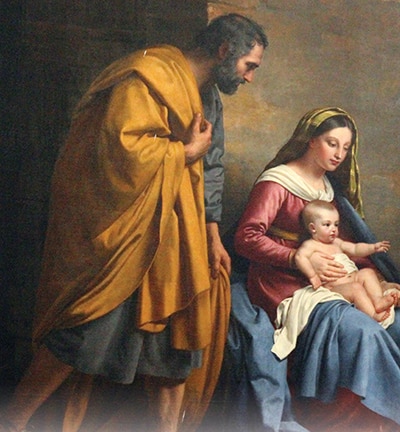
Almost six months after their return to Nazareth from Ain Karim, another journey took place — this time from Nazareth to Bethlehem, the ancestral home of both Joseph and Mary. Once again, Joseph made all the travel arrangements for himself and Mary who was in the final stage of her pregnancy. The trip took about five days from Nazareth, down along the Jordan River to Jericho and then up to Jerusalem. Ordinarily, one could walk from Jerusalem to Bethlehem in a few hours, but at this time the roads were crowded and so were the places where visitors lodged. Nearly every house had a place for guests to stay, but all were occupied because of the census of Caesar Augustus. Many houses in hilly areas such as Nazareth and Bethlehem, however, were built out from caves, thus making it possible for animals to live in the back of the house. It could have been in a place such as this that Jesus was born. It was the best they could do. They remained in this “stable” until most of the visitors left Bethlehem.
The Presentation in the Temple
According to Jewish law, a male child had to be circumcised eight days after his birth. This was a covenant sign that went all the way back to Abraham. In the first century, boys were usually circumcised by their father. The occasion called for a celebration with the relatives and friends of Joseph and Mary. Another ceremony took place 40 days after the birth of Jesus, when the Holy Family walked to the Temple of Jerusalem for a two-fold purpose: to have Mary purified after giving birth and to redeem her first born son. How interesting that the most pure creature God ever created had to be purified — at a cost of five temple shekels, no less — and the redeemer of the world had to be redeemed!
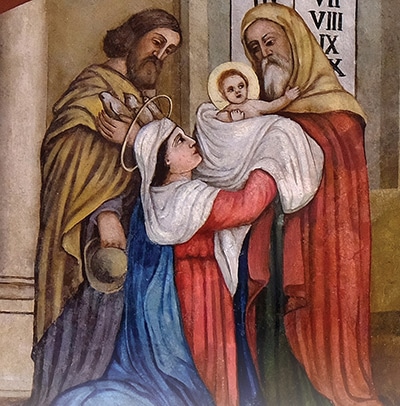
Because Joseph was poor, the cost of redemption was “a pair of turtledoves or two young pigeons,” according to Mosaic Law (Lk 2:24). Out of total obedience, the price was paid, but not before hearing prophecies from Simeon and Anna. Simeon embraced the child Jesus and foretold that he would be a light to the Gentiles and that a sword would pierce Mary’s heart. But what about Joseph’s heart? Their two hearts were remarkably one in spirit. Whatever affected one heart, affected the other as well. Their marriage was a true marriage, not in body, but in spirit — like no other marriage in human history.
There were lots of people in the Temple that day, and among them was Anna, an elderly holy woman regarded as a prophetess. Having recognized the identity of the child, Jesus, she spoke to all who would listen, proclaiming that he was the long awaited savior of Jerusalem, the Messiah. The words of these two holy people confirmed what Mary and Joseph already knew in some obscure way about their son — that he was God-given to them for the whole world’s salvation. Like Mary, Joseph treasured these words in his heart.
We don’t know how long the Holy Family remained in Bethlehem, but shortly after the presentation in the Temple, Joseph was warned in a dream that King Herod planned to kill all the boys in that vicinity who were 2 years of age and under. And so the flight into Egypt took place. It was a very long journey, taking a few weeks and covering about 175 miles to their final destination. The difficulties of living in a foreign land were mitigated by the fact that the Holy Family lived with other Jews in one of many colonies scattered throughout Egypt. One estimate claims that there were almost a million Jews living in Egypt at the time.
After King Herod died, Joseph was told to return to the land of Israel. But instead of relocating in Bethlehem, he settled his family in Nazareth, a small village in Galilee. Because of that move, Jesus was later known as a “Nazorean.”
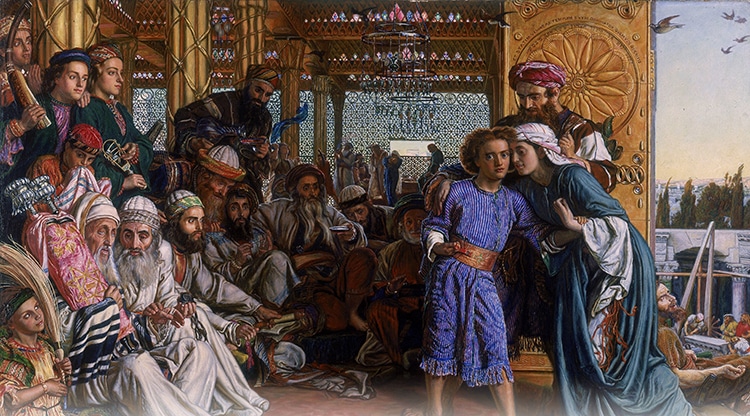
The Finding of Jesus in the Temple
One of the roles that St. Joseph played in the upbringing of Jesus was that of teacher. Like all dutiful Jewish fathers at that time, it was his obligation to teach his child about the rudiments of the Jewish religion — their laws, heritage and especially about the feasts that took place every year in Jerusalem. No doubt, Jesus waited anxiously for the day when he would be able to participate in them. In the meantime, he had to be content with the instructions he received in the synagogue in Nazareth from the time he was 5 or 6 years of age. Mary’s role in the education of her son was to teach him his prayers, mainly through the domestic liturgical celebrations that took place daily in their home. Both she and Joseph were models of virtue for Jesus in his childhood and later in his adult life as well.
On a practical level, Jesus, in his sacred humanity, had to learn a trade — usually the one practiced by his father. Beginning with simple lessons in Joseph’s workshop, Jesus would continue to learn from his father the skills of a craftsman’s trade. It is easy to imagine how the people of Nazareth must have been inspired at the sight of these two righteous sons of David praying together in the synagogue and working together in their hometown and nearby villages.
When Jesus was 12, Joseph decided to take him and his mother to Jerusalem for the Feast of Passover. Joseph and Mary were obliged to go every year, but there was no obligation for Jesus until he became a “Son of the Law” at the age of 13. Once more, Joseph had to make preparations for the journey. It must have been a financial strain due to the cost of joining a caravan for the pilgrimage to Jerusalem and back to Nazareth. It is quite possible that Joseph’s brother, Cleopas, along with his wife, Mary and their sons, James, Joseph, Simon and Jude went along with them. These cousins of Jesus were known as his “brothers” when they all lived together in Nazareth (Mt 13:55).
Arriving in Jerusalem, the Holy Family settled down in the place where they had previously arranged to stay. Most likely it was with relatives who live within the walls of Jerusalem, the proper place to eat the Passover meal. The holy city of Jerusalem was filled with hundreds of thousands of pilgrims at this time.
| A Prayer to St. Joseph |
|---|
|
Hail, Guardian of the Redeemer,
Spouse of the Blessed Virgin Mary.
To you God entrusted his only Son;
in you Mary placed her trust;
with you Christ became man.
Blessed Joseph, to us too,
show yourself a father
and guide us in the path of life.
Obtain for us grace, mercy, and courage,
and defend us from every evil. Amen.
— From Patris Corde (“With a Father’s Heart”), Pope Francis’ apostolic letter proclaiming the Year of St. Joseph
|
Following the Passover festivities, Joseph and his family probably stayed in Jerusalem to celebrate the Feast of Unleavened Bread and the Feast of the First Fruits. Every day of that week was a great learning experience for Jesus, but finally they had to join a caravan heading north to Galilee — this time through Samaria. According to tradition, it was somewhere in the area of modern day Ramallah when Joseph and Mary discovered that Jesus was not to be found with the men or the women in the caravan. That’s when they retraced their steps back to Jerusalem looking for their son. After three days, they finally discovered Jesus in the Temple listening to the doctors, elders and rabbis and asking them questions. It was Mary, not Joseph, who confronted Jesus about his uncharacteristic behavior. His response about being in his Father’s house, about his Father’s business was simply a reminder to his parents about his true identity.
The parents, mystified, left the Temple and joined another caravan heading for Galilee. Shortly after their arrival home, when Jesus turned 13, he went to the synagogue in Nazareth for a ceremony which we now call a Bar Mitzvah. Surely, Joseph and Mary were proud of him as he read a passage from the Torah or from one of the prophets.
The infancy narrative of Luke ends with the observation that Jesus “advanced [in] wisdom and age and favor before God and man” (Lk 2:52).
The hidden years
Our Rosary reflections come to an end at this point also, but not before a word or two about the death of St. Joseph. The decades that Jesus and St. Joseph lived together and worked together are known as the “hidden years.” Somewhere around the time when Jesus was 30 years of age, St. Joseph died “in the arms of Jesus and Mary,” according to tradition, which gives him the right to be called the “Paton of a Happy Death.” Did he suffer a painful death? Was he assumed body and soul into heaven after the resurrection of Jesus? The theological argument of “fittingness” among other things, allows us to give a positive answer. Some saints, scholars and popes such as St. Pope John XXIII see no harm in believing such a theory.
Having placed the above reflections in our minds and hearts, we should be better equipped to pray the Joyful Mysteries of the Rosary in a more profound way.
Mary and Joseph always work together as husband and wife to bring us closer to their son, Jesus. For this, we should be eternally grateful.
Father Joseph Doyle is a Josephite priest and the former president of St. Augustine High School in New Orleans.
| SAINTS ON ST. JOSEPH |
|---|
|
— St. Francis de Sales …………………………………………………………………………………………………………………………………………………………………………………………………………..
— St. Thomas Aquinas …………………………………………………………………………………………………………………………………………………………………………………………………………..
— Blessed William Joseph Chaminade ……………………………………………………………………………………………………………………………………………………………………………………………………………
— St. Josemaría Escrivá …………………………………………………………………………………………………………………………………………………………………………………………………………….
— St. Peter Julian Eymard |

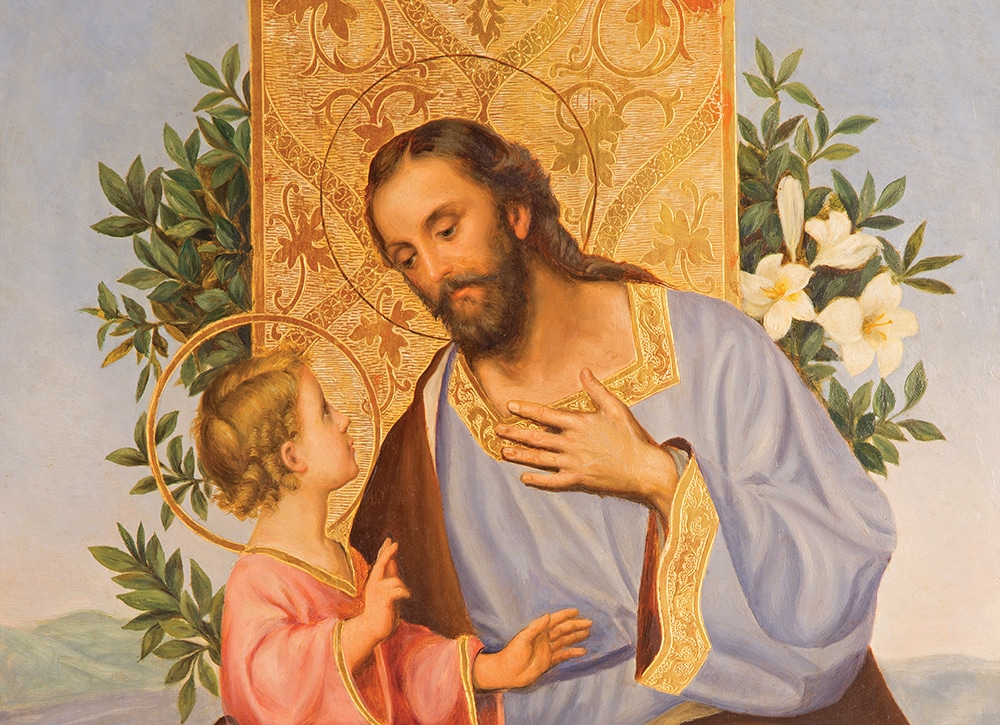
 “Nothing will be refused him [St. Joseph], neither by Our Lady nor by his glorious son.”
“Nothing will be refused him [St. Joseph], neither by Our Lady nor by his glorious son.”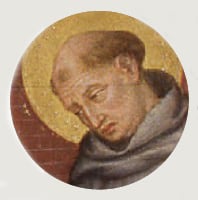 “There are many saints to whom God has given the power to assist us in the necessities of life, but the power given to St. Joseph is unlimited: It extends to all our needs, and all those who invoke him with confidence are sure to be heard.”
“There are many saints to whom God has given the power to assist us in the necessities of life, but the power given to St. Joseph is unlimited: It extends to all our needs, and all those who invoke him with confidence are sure to be heard.”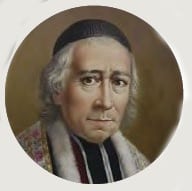 “We wonder why the Gospel makes so little mention of St. Joseph. But did it not say everything when it taught us that he was the husband of Mary?”
“We wonder why the Gospel makes so little mention of St. Joseph. But did it not say everything when it taught us that he was the husband of Mary?”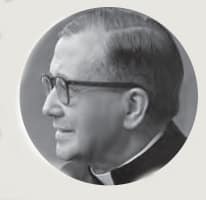 “One cannot love Jesus and Mary without loving the holy patriarch.”
“One cannot love Jesus and Mary without loving the holy patriarch.”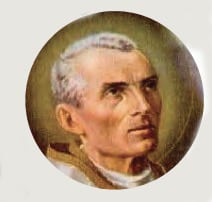 “Devotion to St. Joseph is one of the choicest graces that God can give to a soul, for it is tantamount to revealing the entire treasury of our Lord’s graces. When God wishes to raise a soul to greater heights, he unites it to St. Joseph by giving it a strong love for the good saint.”
“Devotion to St. Joseph is one of the choicest graces that God can give to a soul, for it is tantamount to revealing the entire treasury of our Lord’s graces. When God wishes to raise a soul to greater heights, he unites it to St. Joseph by giving it a strong love for the good saint.”